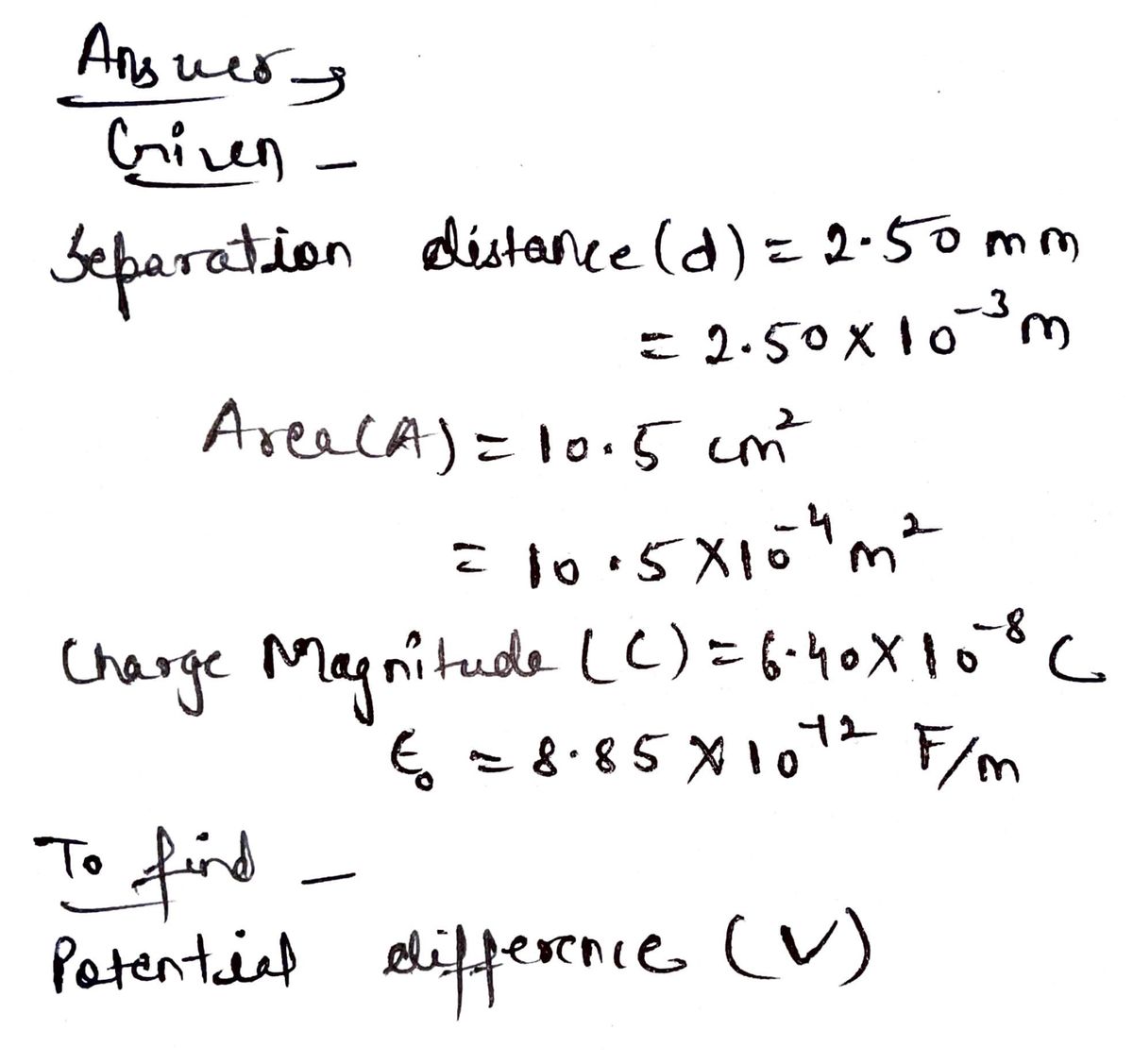The plates of a parallel-plate capacitor are 2.50 mm apart, and each has an area of 10.5 cm². Each plate carries a charge of magnitude 6.40 x108 C. The plates are in vacuum. What is the potential difference between the plates? (so = 8.85 x 10-12 F/m) 3.03 x 106 V 5.40 x 10-20 v 17.2 V *3.03 x 10³ V 688 V 6.88 x 106 V 5.40 x 10-16 V 1.72 x 104 V
The plates of a parallel-plate capacitor are 2.50 mm apart, and each has an area of 10.5 cm². Each plate carries a charge of magnitude 6.40 x108 C. The plates are in vacuum. What is the potential difference between the plates? (so = 8.85 x 10-12 F/m) 3.03 x 106 V 5.40 x 10-20 v 17.2 V *3.03 x 10³ V 688 V 6.88 x 106 V 5.40 x 10-16 V 1.72 x 104 V
Related questions
Question
![The problem presents a parallel-plate capacitor scenario:
**Given:**
- Distance between plates: 2.50 mm
- Area of each plate: 10.5 cm²
- Charge on each plate: 6.40 x 10⁻⁸ C
- Vacuum permittivity (ε₀): 8.85 x 10⁻¹² F/m
**Question:**
What is the potential difference between the plates?
**Options:**
- 3.03 x 10⁶ V
- 5.40 x 10⁻²⁰ V
- 17.2 V
- 3.03 x 10³ V
- 688 V
- 6.88 x 10⁶ V
- 5.40 x 10⁻¹⁶ V
- 1.72 x 10⁴ V
**Explanation:**
The formula to calculate the potential difference (V) between the plates of a capacitor is:
\[ V = \frac{Q \cdot d}{ε₀ \cdot A} \]
Where:
- \( Q \) is the charge on the plates,
- \( d \) is the distance between the plates,
- \( ε₀ \) is the vacuum permittivity,
- \( A \) is the area of the plates.
To solve, first convert all units to meters and square meters, then substitute into the equation.](/v2/_next/image?url=https%3A%2F%2Fcontent.bartleby.com%2Fqna-images%2Fquestion%2F8daeabfb-08fc-4e08-b5f3-009f3913f10d%2F70325ca8-1371-4259-9995-8ff691279f07%2Fb7fcplj_processed.jpeg&w=3840&q=75)
Transcribed Image Text:The problem presents a parallel-plate capacitor scenario:
**Given:**
- Distance between plates: 2.50 mm
- Area of each plate: 10.5 cm²
- Charge on each plate: 6.40 x 10⁻⁸ C
- Vacuum permittivity (ε₀): 8.85 x 10⁻¹² F/m
**Question:**
What is the potential difference between the plates?
**Options:**
- 3.03 x 10⁶ V
- 5.40 x 10⁻²⁰ V
- 17.2 V
- 3.03 x 10³ V
- 688 V
- 6.88 x 10⁶ V
- 5.40 x 10⁻¹⁶ V
- 1.72 x 10⁴ V
**Explanation:**
The formula to calculate the potential difference (V) between the plates of a capacitor is:
\[ V = \frac{Q \cdot d}{ε₀ \cdot A} \]
Where:
- \( Q \) is the charge on the plates,
- \( d \) is the distance between the plates,
- \( ε₀ \) is the vacuum permittivity,
- \( A \) is the area of the plates.
To solve, first convert all units to meters and square meters, then substitute into the equation.
Expert Solution
Step 1

Step by step
Solved in 2 steps with 2 images
